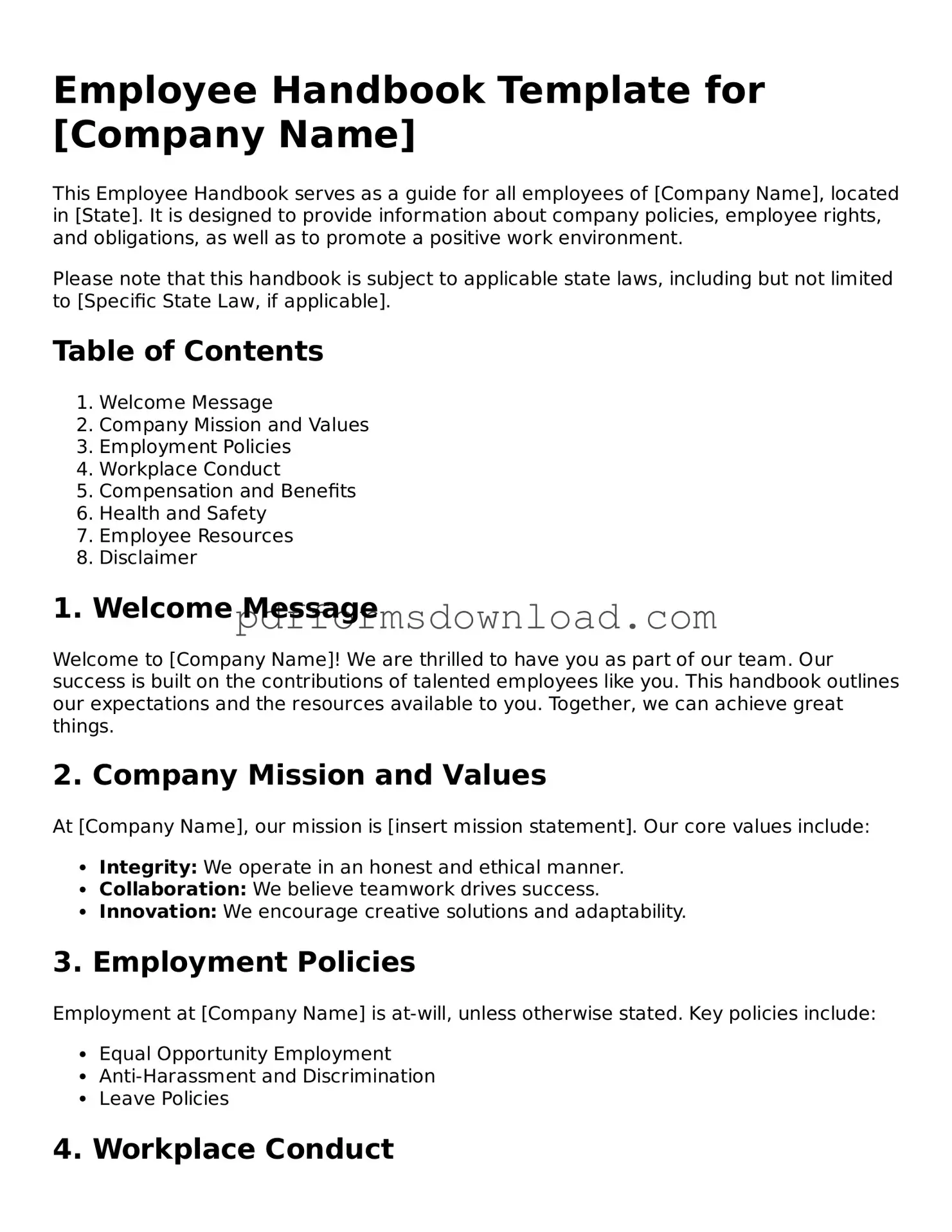What is the purpose of the Employee Handbook?
The Employee Handbook serves as a guide for employees, outlining company policies, procedures, and expectations. It helps ensure everyone is on the same page regarding workplace behavior, benefits, and other important information. Having a clear handbook can also protect both employees and the company by providing a reference point for resolving issues.
Who needs to fill out the Employee Handbook form?
All new employees are typically required to fill out the Employee Handbook form. This ensures that they acknowledge receipt of the handbook and understand its contents. Existing employees may also need to fill out the form if there are significant updates to the handbook or if they change positions within the company.
What information do I need to provide on the form?
The form usually requires basic information such as your name, job title, department, and date of hire. You may also need to sign and date the form to confirm that you have received the handbook and understand its policies. Always double-check to ensure you provide accurate information.
What should I do if I have questions about the handbook?
If you have questions about the Employee Handbook, it’s best to reach out to your supervisor or the HR department. They can clarify any policies or procedures that are unclear. It’s important to address any confusion early to avoid misunderstandings later on.
Can the Employee Handbook be updated?
Yes, the Employee Handbook can be updated as needed. Companies may revise policies to comply with new laws, improve workplace culture, or address employee feedback. When updates occur, employees should receive a new version of the handbook along with a new form to acknowledge receipt of the changes.
What happens if I don’t fill out the Employee Handbook form?
Not filling out the Employee Handbook form may lead to misunderstandings about company policies. It can also create issues if there are disputes regarding policies or procedures later on. Employers may require the form to be completed before you can fully engage in your role or access certain benefits.
Is the information in the Employee Handbook confidential?
Generally, the Employee Handbook is considered an internal document. While it contains important policies and procedures, employees should not share its contents outside the company. If you have concerns about confidentiality, discuss them with your HR department for clarification on what information can be shared.
